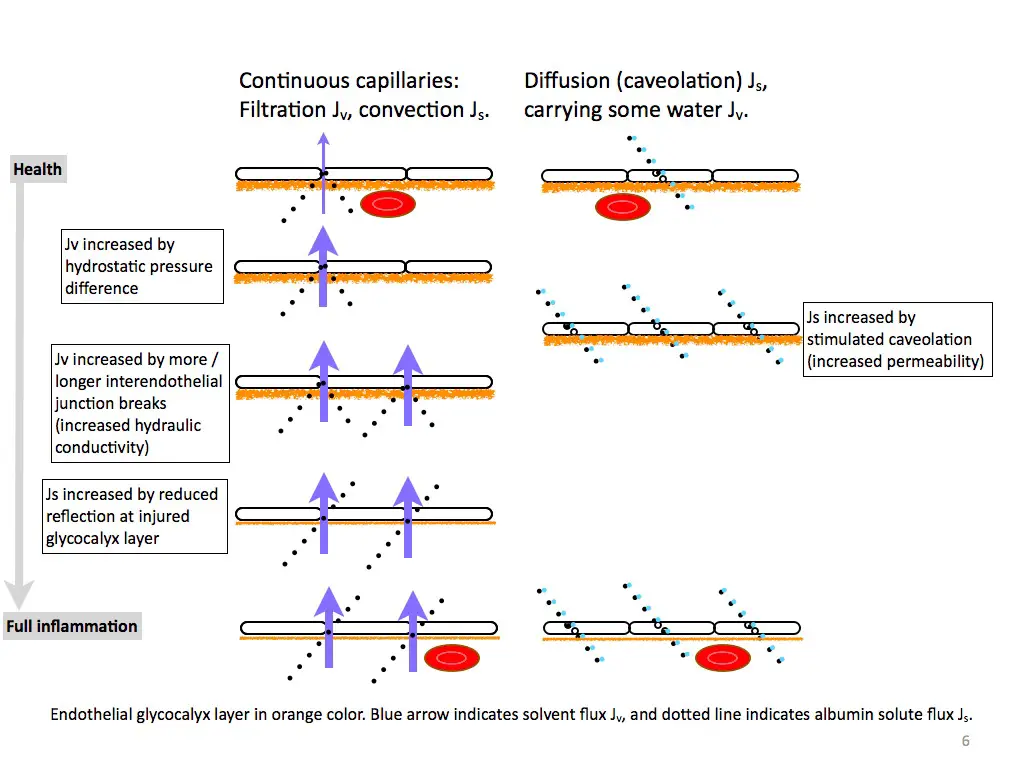
Annals of Pharmacotherapy, Ahead of Print.
Objectives: The purpose of this critical narrative review is to discuss the revised Starling equation for microvascular fluid exchange and the associated implications for intravenous fluid administration. Data Sources: PubMed (1946 to December 2019) and EMBASE (1947 to December 2019) were used, and bibliographies of retrieved articles were searched for additional articles. Study Selection and Data Extraction: Articles pertaining to the revised Starling equation and microvascular fluid exchange. Additionally, prospective human studies involving the disposition and oncotic action of radiolabeled albumin and large randomized trials comparing fluid requirements associated with isotonic crystalloid and albumin administration were included. Data Synthesis: In the revised Starling equation, oncotic forces act across the endothelial cell layer, more specifically between the fluid in the vessel lumen and the protein-sparse subglycocalyx space. The revised Starling equation and radiolabeled investigations of albumin necessitate a reconsideration of conventional views of the plasma-expanding properties of exogenous albumin. Large clinical trials demonstrate that the administration of iso-oncotic or hyper-oncotic albumin solutions in patients undergoing resuscitation does not have the reductions in fluid requirements anticipated from a traditional understanding of the oncotic actions of albumin. Relevance to Patient Care and Clinical Practice: When used as a resuscitation fluid, albumin does not have the degree of plasma expansion or intravascular retention commonly used to justify its use. Conclusions: The principles underlying the revised Starling equation in conjunction with data from radiolabeled studies of albumin and large clinical trials demonstrate that albumin does not have the perceived degree of plasma expansion or duration of intravascular retention beyond crystalloid solutions predicted by the classic Starling equation.
Objectives: The purpose of this critical narrative review is to discuss the revised Starling equation for microvascular fluid exchange and the associated implications for intravenous fluid administration. Data Sources: PubMed (1946 to December 2019) and EMBASE (1947 to December 2019) were used, and bibliographies of retrieved articles were searched for additional articles. Study Selection and Data Extraction: Articles pertaining to the revised Starling equation and microvascular fluid exchange. Additionally, prospective human studies involving the disposition and oncotic action of radiolabeled albumin and large randomized trials comparing fluid requirements associated with isotonic crystalloid and albumin administration were included. Data Synthesis: In the revised Starling equation, oncotic forces act across the endothelial cell layer, more specifically between the fluid in the vessel lumen and the protein-sparse subglycocalyx space. The revised Starling equation and radiolabeled investigations of albumin necessitate a reconsideration of conventional views of the plasma-expanding properties of exogenous albumin. Large clinical trials demonstrate that the administration of iso-oncotic or hyper-oncotic albumin solutions in patients undergoing resuscitation does not have the reductions in fluid requirements anticipated from a traditional understanding of the oncotic actions of albumin. Relevance to Patient Care and Clinical Practice: When used as a resuscitation fluid, albumin does not have the degree of plasma expansion or intravascular retention commonly used to justify its use. Conclusions: The principles underlying the revised Starling equation in conjunction with data from radiolabeled studies of albumin and large clinical trials demonstrate that albumin does not have the perceived degree of plasma expansion or duration of intravascular retention beyond crystalloid solutions predicted by the classic Starling equation.
